Robert Fulton Is Watching You From Flatbush Avenue
Peer past the signage covering its elegant facade and you can catch a pair of eyes staring out from above the entrance.

Peer past the signage covering its elegant facade and you can catch a pair of eyes staring out from above the entrance to 815 Flatbush Avenue.
Above the bust is a medallion depicting a steamboat, giving a clue to the identity of the male figure and the original use of the building. Now a 99 cent store, the red brick and limestone building was constructed in 1931 as a branch of the Fulton Savings Bank.
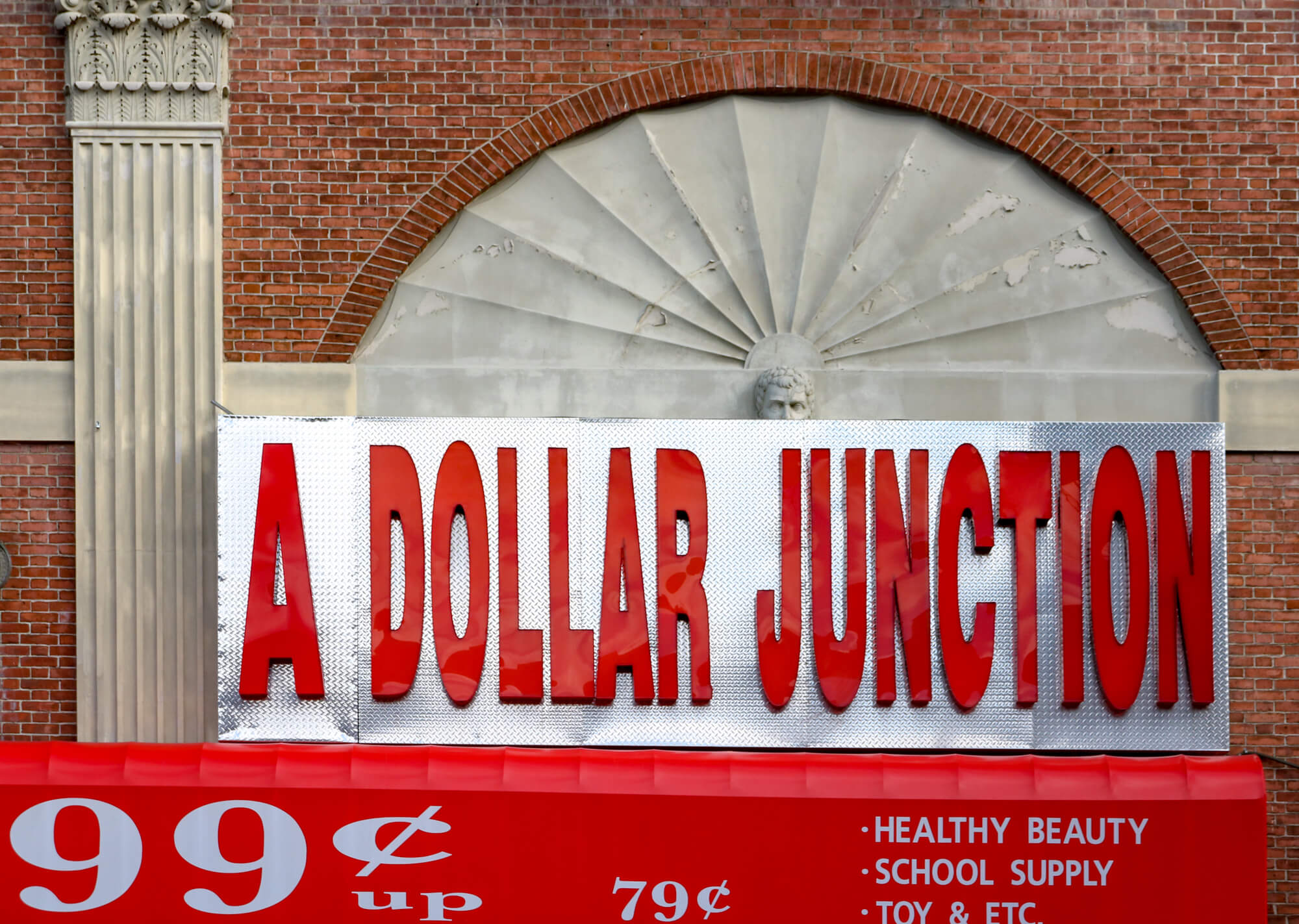
Established in 1867 in Downtown Brooklyn as the Germania Savings Bank, it underwent a name change to the Fulton Savings Bank during World War I. The new name was in honor of Robert Fulton, the inventor and engineer credited with making steamboat travel a practical reality in 1807. His name also graced Fulton Street, where the bank had been located since its founding.
In 1930, the bank announced they were expanding with their very first branch, to be opened in Flatbush. The bank president, Richard J. Wulff, told the Brooklyn Daily Eagle that Flatbush was chosen because “the population in this particular section has greatly increased during the past 10 years by reason of the erection of many multiple dwelling houses.” The selected spot was on Flatbush Avenue where the Linden Theater, opened in 1911 but no longer operating, was located.
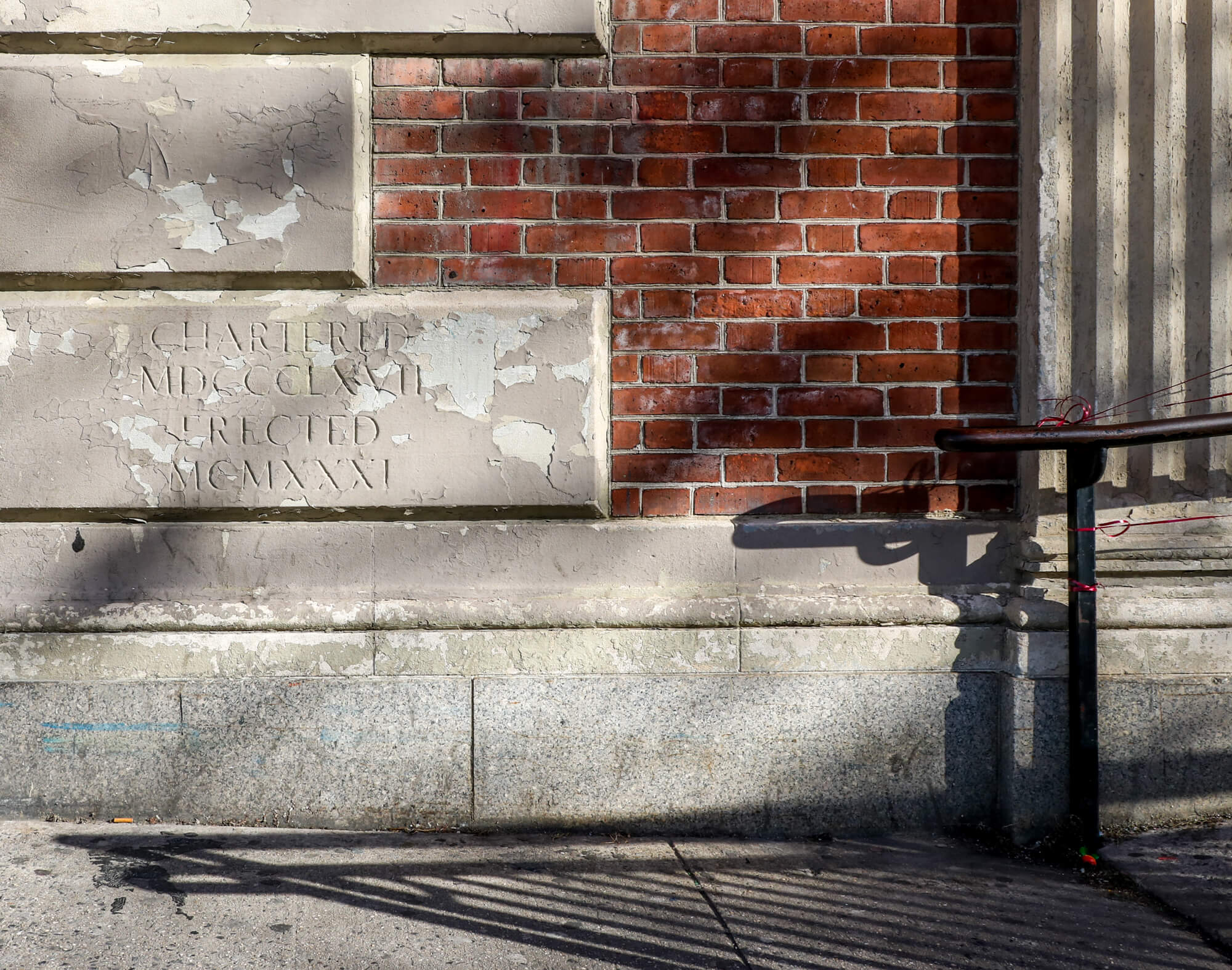
Construction on the new bank building waited until the theater was demolished and the work by the city to extend Caton Avenue across Flatbush to Bedford Avenue was complete. This street extension meant that the bank would be constructed on the newly created corner of Flatbush and Caton avenues.
By May of 1931, the Brooklyn Daily Eagle announced that construction on the “handsome building” was moving forward. The article included a full description of the the neo-Georgian building designed by De Young, Moscowitz & Rosenberg. The trio of architects, all with classical training, founded their firm in 1929.
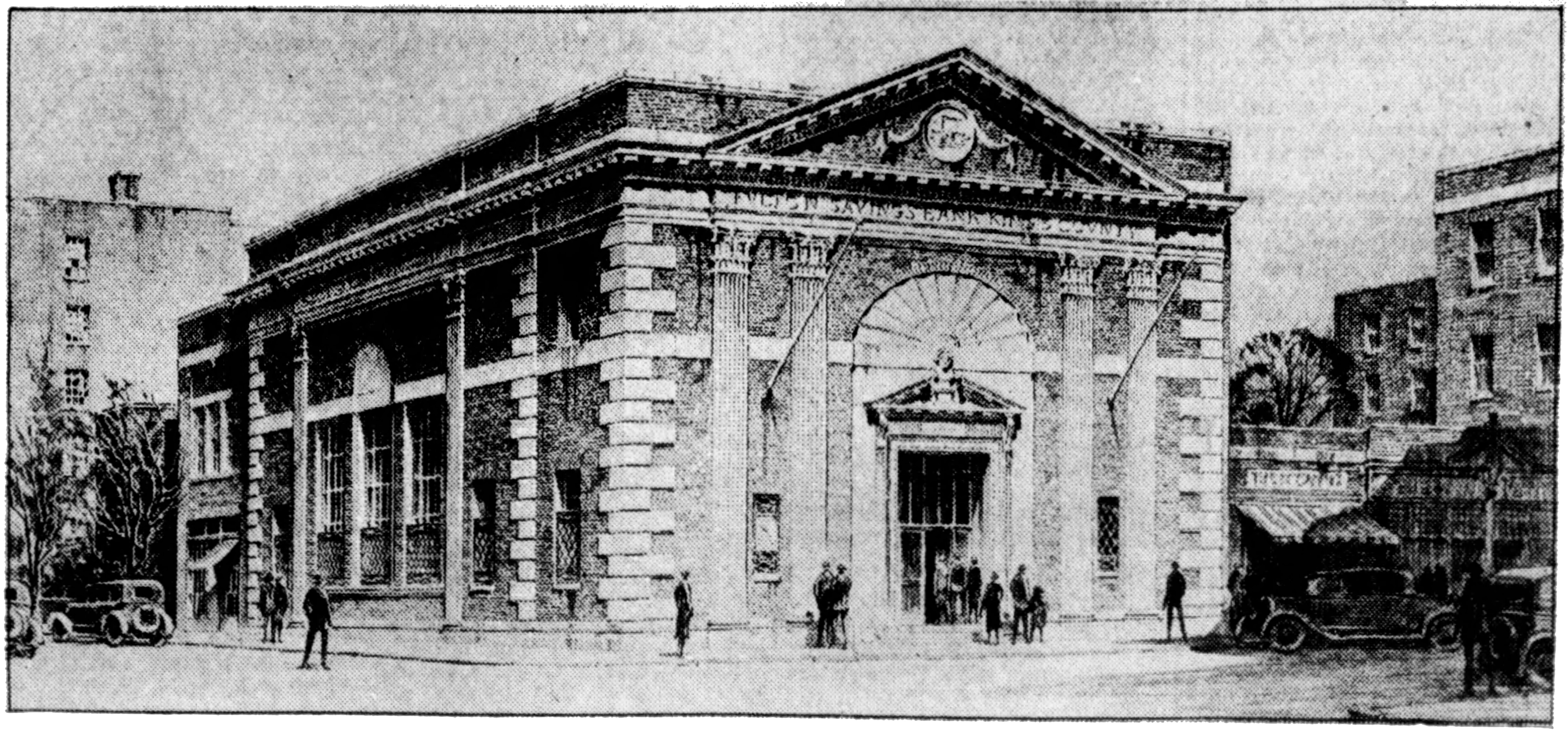
While trained in the classical tradition, by the mid 1930s they would leave the architectural vocabulary of the past as reflected in this bank behind and embrace modernism. Their new outlook can be seen at the buildings of the FIT campus in Manhattan and was once evident at the main branch they designed for Fulton Savings Bank in 1955 at 1 Boerum Place (since demolished).
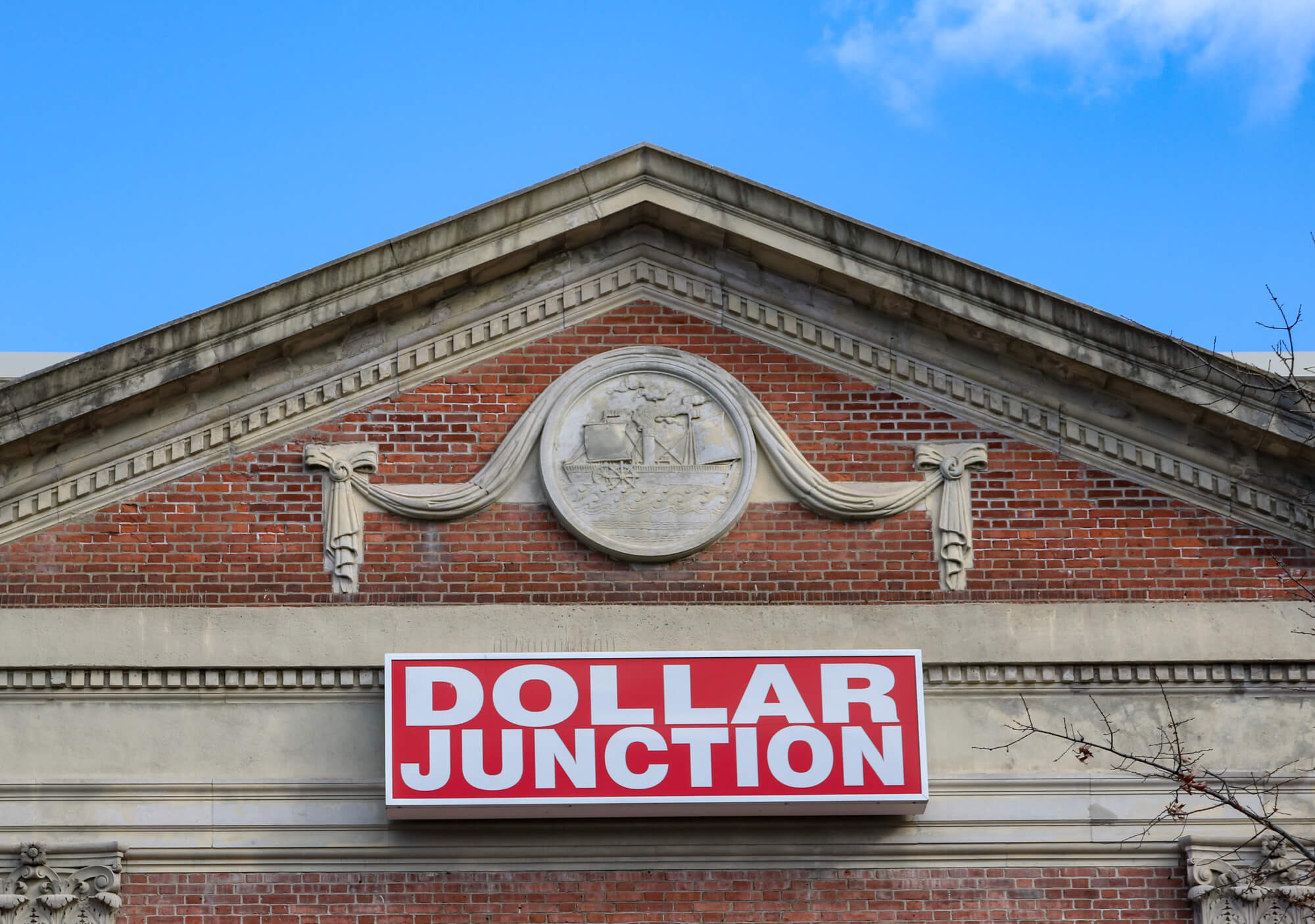
But in 1931, the Flatbush branch was designed with the comfortable familiarity of “Colonial America” with warm red brick, a central pediment, pilasters and quoins. Perched below a stone fanlight right above the entrance is the stone bust of Robert Fulton. Only partially visible now, his eyes look out on a changing Flatbush Avenue. Above him, in the peak of the pediment, is the medallion depicting his steamboat.
The bank went through a few name changes over the decades as it merged with other lending institutions. Most recently it was an HSBC branch until the location was closed in 2011. The property was sold in 2012 and the grand banking hall became a retail space.
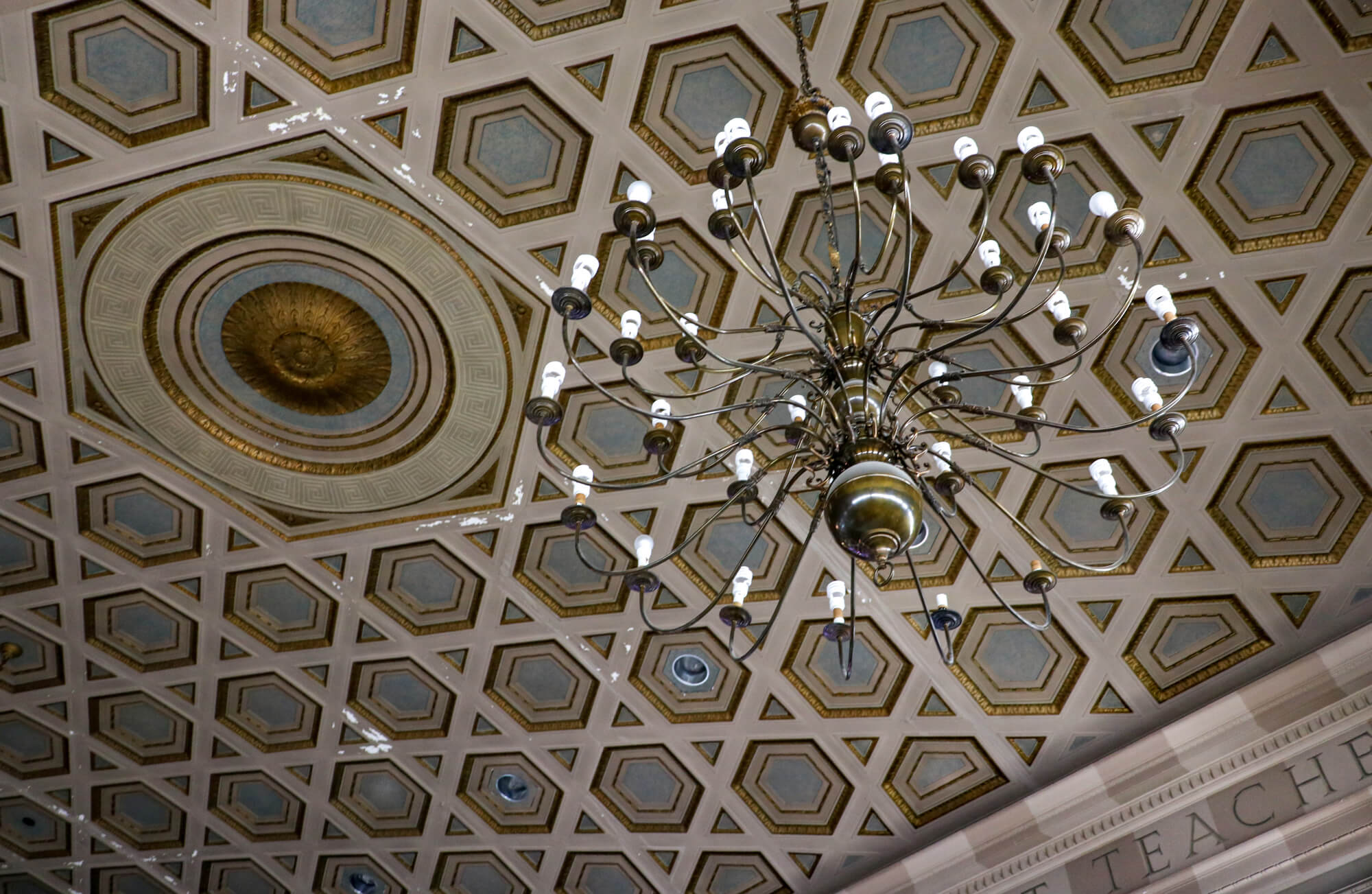
Stepping inside the former bank is a delightful surprise. The soaring coffered ceiling is still in place, along with other surviving details like marble columns and pilasters, along with dentil, bead and reel, and Greek key moldings. You have to peek around shop goods to spot the details, but the shelves and lighting are all well below the decorative ceiling, although the lower walls of the space aren’t clearly visible.
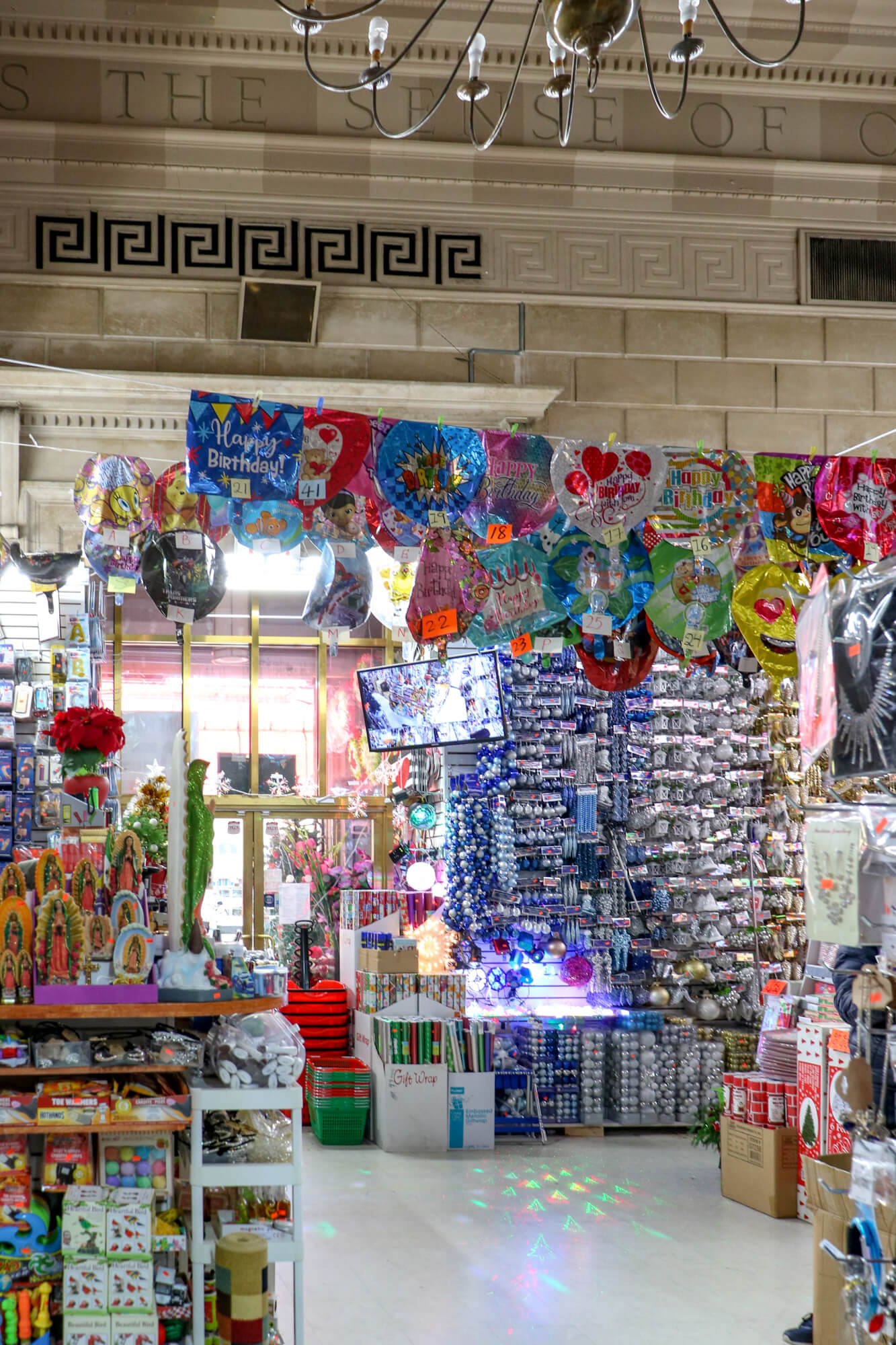
According to that 1931 Brooklyn Daily Eagle description, those lower side walls had large murals “depicting the development of ships since Robert Fulton’s invention of the steamboat.” Intriguingly, several photos in the collection of the Library of Congress depict the bank in 1939 after some new lighting was installed by the Rambusch Decorating Company. The photos give a glimpse of the murals, the original teller windows and the checkerboard floor.
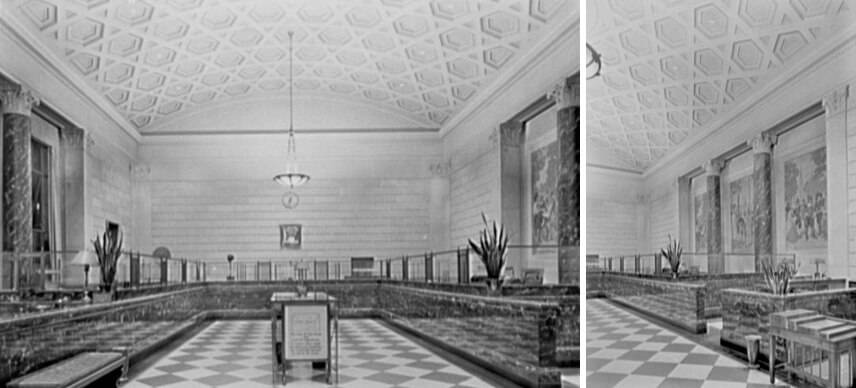
The interior details and the building itself may not survive much longer. The former bank, and the adjoining one-story commercial building on Flatbush Avenue that is part of the same lot, sold this November for $10 million to Flatbush Caton LLC.
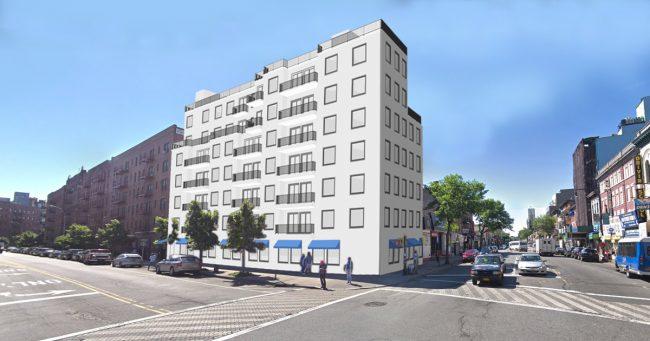
An Alt 1 application was filed prior to that, in October, on behalf of Harry Einhorn of Flatbush Caton LLC, spelling out plans to alter the bank into a seven story mixed-use building. The architect of record is listed as Asher Hershkowitz. A rendering for the proposed project reveals little, if any, exterior historic fabric will survive. No permits have been issued yet, so perhaps Robert Fulton has a bit more time.
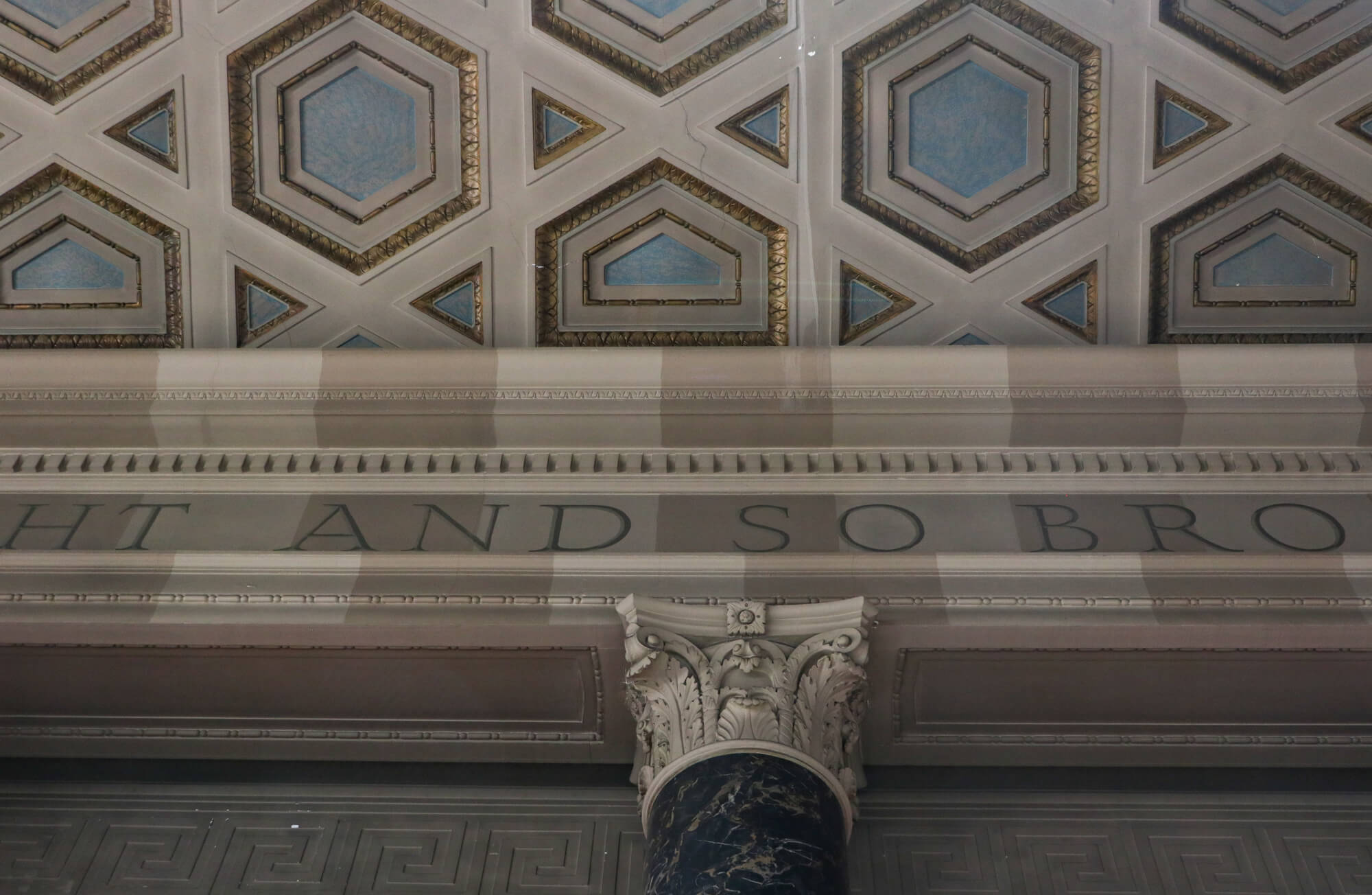
[Photos by Susan De Vries unless noted otherwise]
Related Stories
- The Art Deco Guardian Lions of Banking in Crown Heights
- A Mid-Century Surprise in Downtown Brooklyn
- Brevoort Savings Bank
Email tips@brownstoner.com with further comments, questions or tips. Follow Brownstoner on Twitter and Instagram, and like us on Facebook.

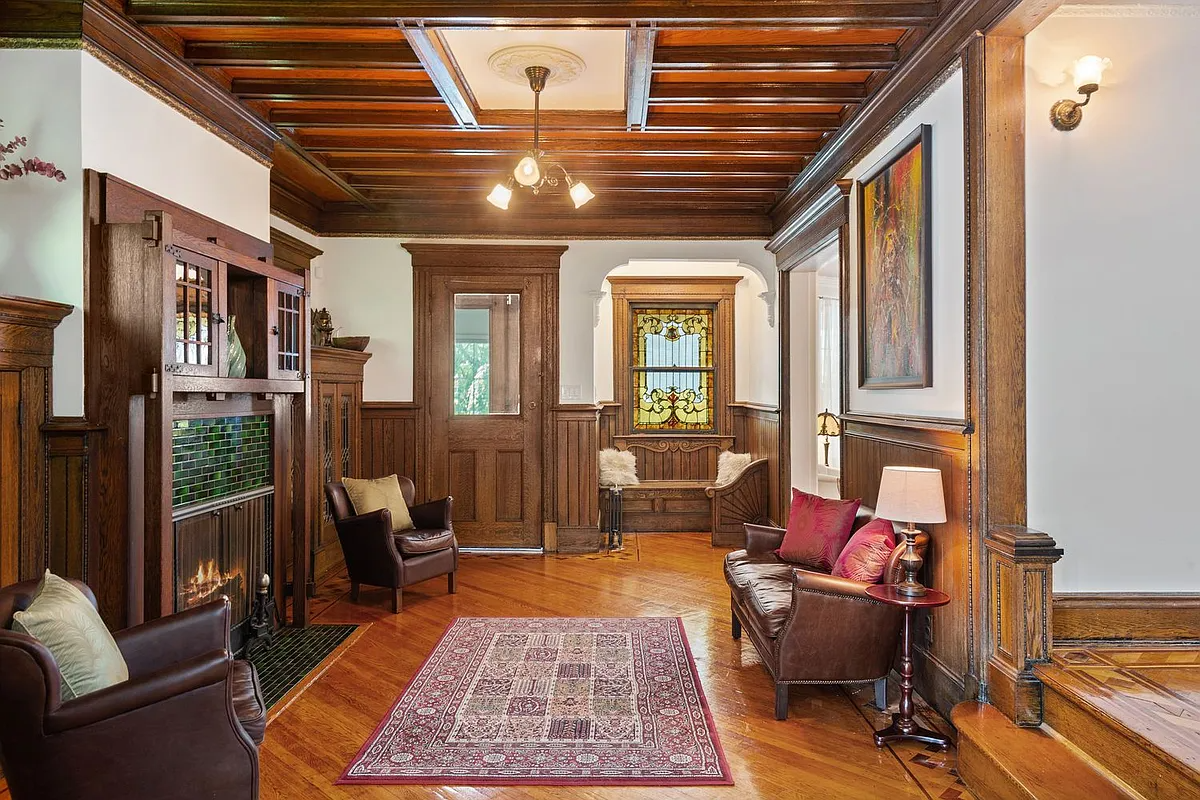



What's Your Take? Leave a Comment